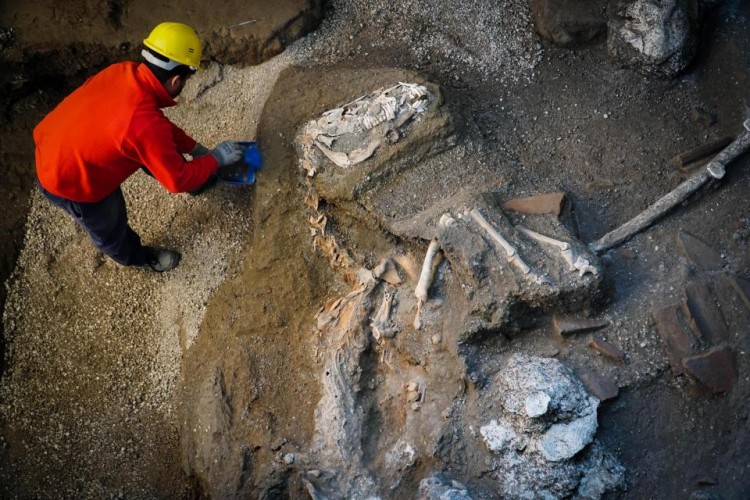The remains of a horse still wearing a saddle and harness have just been discovered in the city of Pompeii, southern Italy, nearly 2,000 years after the Vesuvius volcanic disaster that buried an entire city in hot ash.

The horse’s corpse still had its saddle and bridle intact. Photo: AP
Archaeologists say this discovery is of “rare importance”. The horse is quite large and carefully groomed. It was also saddled and ready to be used as a vehicle for people to ride to escape the volcanic eruption in Pompeii in 79 AD.
According to experts, horse saddles are richly decorated with many details made from bronze. This horse was buried with the remains of two other horses at the Villa of the Mysteries on the outskirts of Pompeii. This villa once belonged to a high-ranking military judge or general during Roman times.

The horse’s body is completely intact after nearly 2,000 years.
Massimo Osanna, director of the Pompeii archaeological park, said the horses met a “violent and gruesome end” when they suffocated in ash or boiling steam from Vesuvius’ ash cloud. People preparing to ride horses also died due to the heat from the eruption.
The area where horse remains were first discovered was excavated in the early 20th century but most were reburied and were later targeted by looters.
“The entire area will be excavated and opened to the public,” Mr. Osanna added.
Archaeologists also found wine presses, ovens and incredible frescoes in the luxury villa overlooking the sea
Mount Vesuvius, on Italy’s west coast, is the only active volcano in mainland Europe and is said to be one of the world’s most dangerous volcanoes.